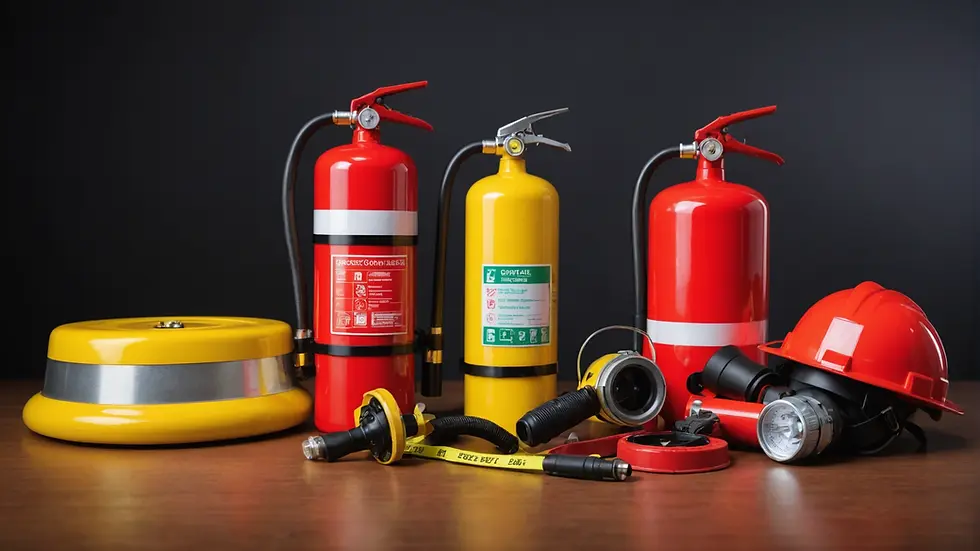Home safety is vital to our lives, yet it often gets pushed aside. In the hustle and bustle of daily life, we may overlook safety protocols, thinking that accidents only happen to others. However, neglecting home safety can lead to severe consequences, including injuries, financial burdens, and emotional distress. In this post, we will explore the cost of ignoring home safety guidelines, highlighting real risks and the long-lasting impact of negligence.
Understanding Home Safety
Home safety includes a range of practices aimed at protecting both people and property. This means installing smoke detectors, securing windows and doors, and efficiently maintaining electrical systems. Ensuring the safety of children and pets is also crucial. By following these safety measures, we can prevent accidents and create a much safer living space.
Recognizing the significance of home safety measures empowers residents to avoid potential hazards, preventing dangerous situations before they arise.
The Risks Involved
Accidents and Injuries
One of the most immediate risks of ignoring home safety guidelines is an increase in accidents and injuries. According to the National Safety Council (NSC), around 90% of injuries occur at home. Common accidents include falls, fires, and poisoning. For instance, the CDC reported that more than 800,000 patients each year are hospitalized due to fall-related injuries, many of which could be prevented with simple precautions such as installing handrails.
Another serious risk arises from failing to install and maintain smoke detectors. The NSC notes that having a working smoke detector reduces the risk of dying in a fire by up to 50%. Every year in the U.S., 3,000 people lose their lives in home fires. These tragedies could often be avoided by being proactive about home safety.
Financial Costs
Ignoring home safety results in severe financial implications. The costs associated with accidents can add up quickly. Expenses may include medical bills, legal fees, and increased insurance premiums. For example, a single kitchen fire can cause damages ranging from $10,000 to over $100,000, depending on the scale of the incident.
Moreover, homes that don't meet safety standards may face added costs during insurance assessments, which can result in higher premiums or even denial of coverage. This makes the pursuit of safety not just a matter of protection but a smart financial decision as well.
Emotional Impact
The emotional toll of neglecting home safety guidelines can be significant and long-lasting. Victims of home accidents can experience anxiety, depression, and post-traumatic stress disorder (PTSD). These psychological challenges greatly affect their quality of life.
Families often face additional stress stemming from accidents. A sense of insecurity may permeate their daily lives, as fear of similar events can lead to constant worry. This damage to mental well-being can strain relationships and disrupt the overall harmony within a home.
Common Safety Neglect Areas
Fire Safety
Fire safety is frequently overlooked in many households. Many families either do not install smoke detectors or fail to check them regularly. Smoke detectors are essential for early fire detection, and the NSC highlights that having a working smoke detector can reduce the risk of fire-related fatalities by 50%.
Additionally, many neglect to maintain fire extinguishers and fail to create clear fire escape routes. During a fire, knowing how to escape can save lives. Without these proactive steps, families may find themselves unprepared during emergencies.

Electrical Safety
The area of electrical safety also poses significant risks. Overloaded circuits, frayed wires, and outdated systems can lead to fires. In fact, the National Fire Protection Association (NFPA) reports that electrical failures or malfunctions are responsible for 15% of all home fires.
Routine checks and professional evaluations of electrical systems can identify potential hazards early. Most homeowners don't realize the importance of regular inspections until an issue arises. Raising awareness about electrical safety can diminish these risks effectively.
Proactive Measures
Regular Inspections
One of the best ways to ensure home safety is by conducting routine inspections. Regularly check smoke detectors and fire extinguishers, and evaluate electrical systems to prevent accidents. Homeowners should follow manufacturer guidelines, replacing smoke detectors every ten years to maintain functionality.
Education and Awareness
Educating all family members on home safety practices is essential. Conducting fire drills and teaching children about electrical safety can empower everyone to take safety seriously. By sharing knowledge about household chemicals and their risks, you can prepare your family to act wisely and responsibly.
Investing in Safety
Investing time and resources in home safety is a responsible choice that safeguards family members and protects property. Various safety devices and systems, such as alarms, surveillance cameras, and smart home technology, can enhance overall security.
Ultimately, prioritizing home safety not only saves lives but also prevents financial losses. By understanding the risks and taking proactive measures, we can build a safer living environment for everyone.
Prioritize Home Safety Today
The cost of neglecting home safety is significant, encompassing immediate risks of accidents, long-term emotional distress, and financial burdens. Home safety should always be top of mind, not an afterthought.
By understanding the potential dangers, taking proactive steps, and investing in necessary safety measures, it is possible to transform your home into a safe haven. The peace of mind that comes from knowing you and your loved ones are protected is invaluable. Start prioritizing home safety today and create a secure environment for your family to thrive.



Comments